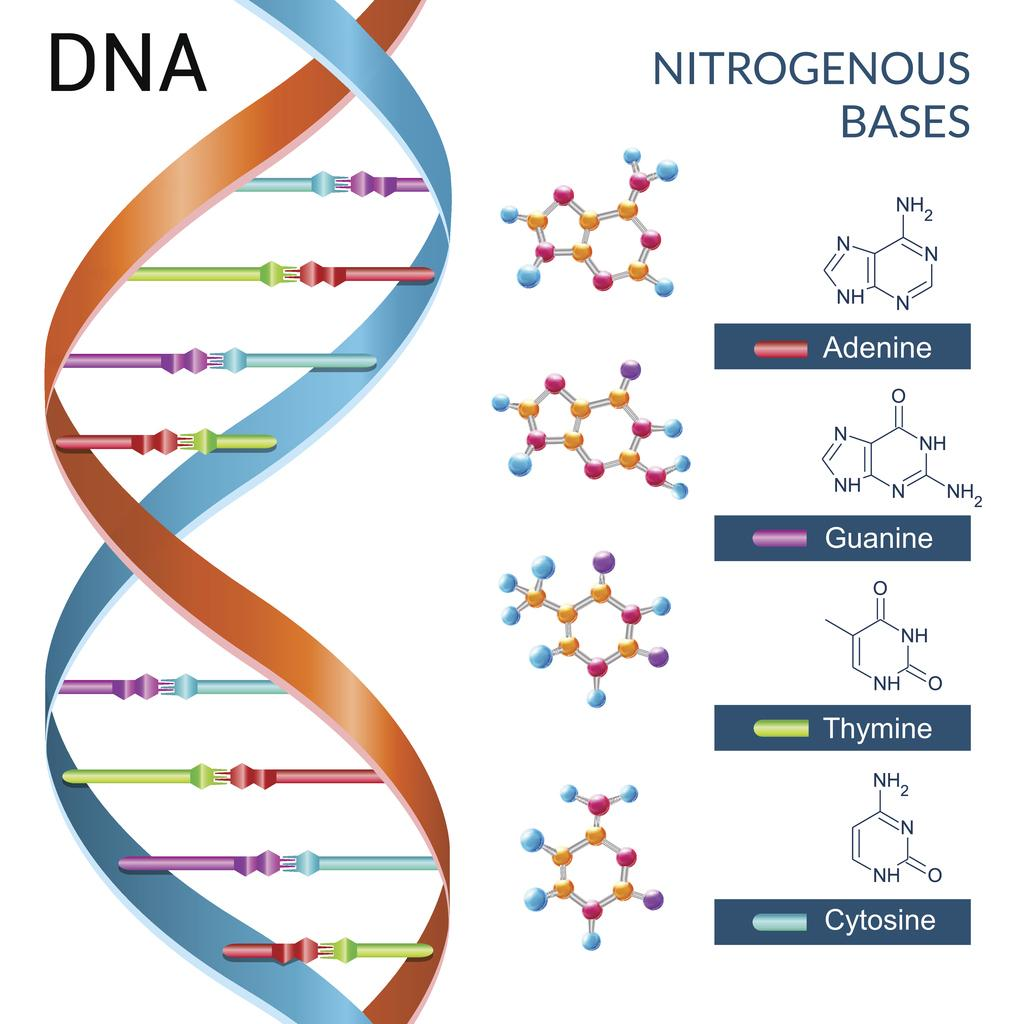DNA is the Deoxyribonucleic acid that is a long molecule containing four unique genetic codes. It holds all of the instructions to hold the proteins. In short, the genome is made up of deoxyribonucleic acid. It has four basic building blocks, cytosine, guanine, adenine, and thiamine. DNA has the two strands and it has a unique shape like a double helix that is twisted like a ladder. Each of the strands has the sequences of the four bases. The bases present on the strands of DNA molecule, pairs with the complementary bases on the opposite strands of the DNA and the rungs of DNA ladder are formed. The pairing of the bases is always the same such as C with G and A with T. These base pairs are joined together by the means of hydrogen bonding. Each of the strands of DNA has a begging and an end called as three prime and five prime. The same biological information is stored in both strands of DNA. On the separation of two strands, this information is replicated. A large part of DNA does not serve as a pattern to sequence the proteins as it is non-coding.

The two strands of the DNA are antiparallel to each other and run in the opposite direction and respectively they are called as sense and antisense strands. During the process of DNA replication, these strands are separated and Francis Crick and James Watson were the first persons who discovered the double helix structure of DNA. In the human genome, there are 3.2 billion bases of DNA but the genome of other organisms is small in size. DNA is a complex molecular structure, and it is found in all the eukaryotic, and prokaryotic cells, and is present in some viruses as well. It codes the genetic information and transmits the inherited traits. The sequence of the nucleobases is the backbone to encode the genetic information.
Configuration of DNA molecule shows that it is highly stable, and it also acts as a template for the formation of new DNA molecules by the replication process and also causes the production of a related molecule of RNA. Inside the cells, DNA is highly organized to the complexes that are called chromosomes. DNA replicates and provides the complete set of the chromosomes to the daughter cells. DNA carries the information, in the form of sequences of small pieces of DNA called genes. Complementary base pairing is used for the transmission of genetic information.